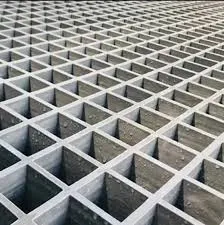
-
 Afrikaans
Afrikaans -
 Albanian
Albanian -
 Amharic
Amharic -
 Arabic
Arabic -
 Armenian
Armenian -
 Azerbaijani
Azerbaijani -
 Basque
Basque -
 Belarusian
Belarusian -
 Bengali
Bengali -
 Bosnian
Bosnian -
 Bulgarian
Bulgarian -
 Catalan
Catalan -
 Cebuano
Cebuano -
 China
China -
 China (Taiwan)
China (Taiwan) -
 Corsican
Corsican -
 Croatian
Croatian -
 Czech
Czech -
 Danish
Danish -
 Dutch
Dutch -
 English
English -
 Esperanto
Esperanto -
 Estonian
Estonian -
 Finnish
Finnish -
 French
French -
 Frisian
Frisian -
 Galician
Galician -
 Georgian
Georgian -
 German
German -
 Greek
Greek -
 Gujarati
Gujarati -
 Haitian Creole
Haitian Creole -
 hausa
hausa -
 hawaiian
hawaiian -
 Hebrew
Hebrew -
 Hindi
Hindi -
 Miao
Miao -
 Hungarian
Hungarian -
 Icelandic
Icelandic -
 igbo
igbo -
 Indonesian
Indonesian -
 irish
irish -
 Italian
Italian -
 Japanese
Japanese -
 Javanese
Javanese -
 Kannada
Kannada -
 kazakh
kazakh -
 Khmer
Khmer -
 Rwandese
Rwandese -
 Korean
Korean -
 Kurdish
Kurdish -
 Kyrgyz
Kyrgyz -
 Lao
Lao -
 Latin
Latin -
 Latvian
Latvian -
 Lithuanian
Lithuanian -
 Luxembourgish
Luxembourgish -
 Macedonian
Macedonian -
 Malgashi
Malgashi -
 Malay
Malay -
 Malayalam
Malayalam -
 Maltese
Maltese -
 Maori
Maori -
 Marathi
Marathi -
 Mongolian
Mongolian -
 Myanmar
Myanmar -
 Nepali
Nepali -
 Norwegian
Norwegian -
 Norwegian
Norwegian -
 Occitan
Occitan -
 Pashto
Pashto -
 Persian
Persian -
 Polish
Polish -
 Portuguese
Portuguese -
 Punjabi
Punjabi -
 Romanian
Romanian -
 Russian
Russian -
 Samoan
Samoan -
 Scottish Gaelic
Scottish Gaelic -
 Serbian
Serbian -
 Sesotho
Sesotho -
 Shona
Shona -
 Sindhi
Sindhi -
 Sinhala
Sinhala -
 Slovak
Slovak -
 Slovenian
Slovenian -
 Somali
Somali -
 Spanish
Spanish -
 Sundanese
Sundanese -
 Swahili
Swahili -
 Swedish
Swedish -
 Tagalog
Tagalog -
 Tajik
Tajik -
 Tamil
Tamil -
 Tatar
Tatar -
 Telugu
Telugu -
 Thai
Thai -
 Turkish
Turkish -
 Turkmen
Turkmen -
 Ukrainian
Ukrainian -
 Urdu
Urdu -
 Uighur
Uighur -
 Uzbek
Uzbek -
 Vietnamese
Vietnamese -
 Welsh
Welsh -
 Bantu
Bantu -
 Yiddish
Yiddish -
 Yoruba
Yoruba -
 Zulu
Zulu
Innovative FRP Manhole Cover Solutions for Enhanced Durability and Safety
Exploring FRP Manhole Covers Advantages and Applications
Manhole covers are essential components of urban infrastructure, providing access to underground utilities while safeguarding public safety. Traditionally made from materials like cast iron or steel, manhole covers have evolved over the years, and one of the most innovative alternatives gaining traction is Fiberglass Reinforced Polymer (FRP). FRP manhole covers present a host of advantages that make them an attractive choice for municipal applications.
Exploring FRP Manhole Covers Advantages and Applications
Durability is another compelling reason to consider FRP. These covers are resistant to a variety of environmental factors, including corrosion, rust, and chemical exposure. This property ensures a longer lifespan compared to traditional metal covers, which can deteriorate over time, especially in harsh weather conditions or locations with aggressive chemicals. As such, FRP manhole covers require less frequent replacement, leading to cost savings in the long run.
frp manhole cover

In addition to their durability and lightweight nature, FRP covers also provide a high degree of safety. They can be designed to be slip-resistant, ensuring that pedestrians and vehicles maintain grip, even in wet conditions. Moreover, FRP is non-conductive, making it a safer option in areas with high electrical sensitivity. This feature significantly reduces the risk of accidents, further underscoring the suitability of FRP for urban settings.
From a design perspective, FRP manhole covers offer greater flexibility. They can be molded into various shapes, sizes, and colors, allowing for aesthetic customization that can blend seamlessly with urban environments. This adaptability not only enhances the visual appeal of streetscapes but also aids in easy identification and access to utility points.
The shift towards sustainability is another driving factor for adopting FRP manhole covers. The materials used in FRP manufacturing are often recyclable, aligning with the growing commitment to eco-friendly solutions in city planning. Additionally, the extended lifecycle of FRP products contributes to reduced waste and environmental impact.
In conclusion, FRP manhole covers represent a modern solution for urban infrastructure needs. Their lightweight nature, durability, safety features, design flexibility, and sustainability make them a preferable choice over traditional materials. As cities continue to evolve and adapt to new challenges, the incorporation of innovative materials like FRP will play a critical role in building safer and more efficient urban environments.









